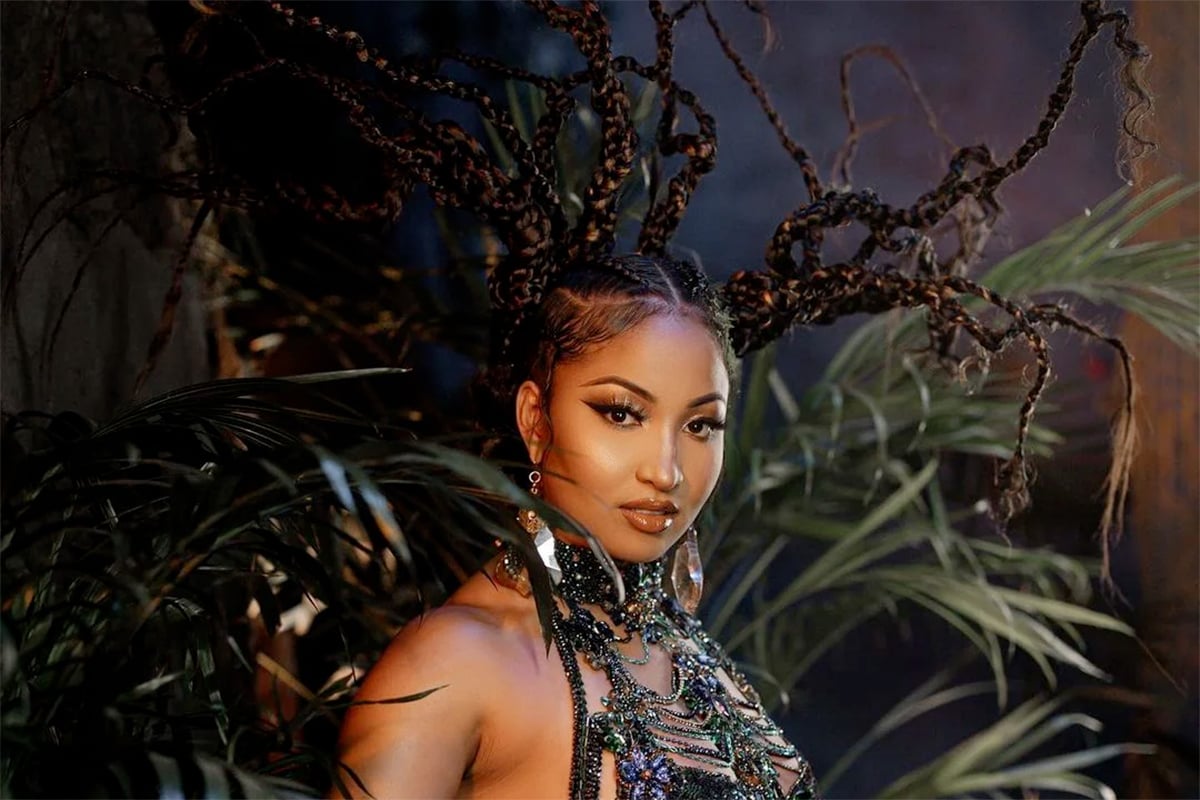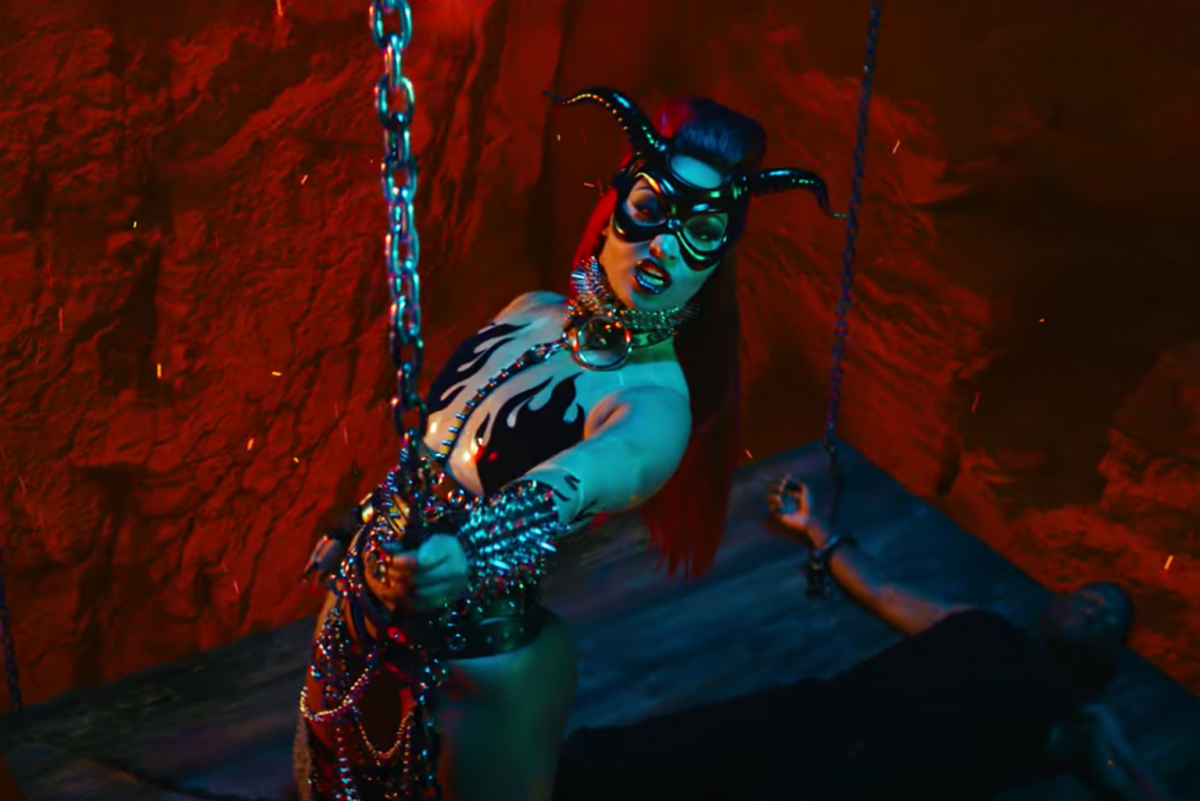Shenseea Channels Medusa But Where Is The Culture?

Shenseea’s music video for Run Run racked up over 2 million views over the weekend. The director used scenes of a man running with a heart in his hand, her chasing him in the back of a black truck, Mad Max-style, red images, horn heads, snakes, locs, fire, and the brutalizing of the male as revenge for past hurt.
In the video directed by Christian Breslauer, the Dancehall star can be seen channeling the Greek deity who is often represented by the use of locs and snakes. Medusa was the daughter of ancient chthonic deities of the sea. The song Run Run is about seeking revenge for a lost love, and Medusa’s most common interpretation is to protect from and ward off the opposition. Medusa also represents a dangerous threat meant to deter other dangerous threats, an image of evil to repel evil.
The Miami native Breslauer is well in his right to make choices based on his imagination and creativity. On his IMDb he is remarked as “a young, ambitious Director, Writer and Cinematographer. He cuts his teeth on telling authentic and compelling stories. His visual style is bold and gritty”.
However, for many conservative Jamaicans, and those in America where Shenseea is trying to take her career, these images are seen as deviant.
Comments under the YouTube video, and on Instagram suggest that she has “sold her soul”.
This is not a new phenomenon for artists to be accused of “selling their soul” as they chart new courses in music to expand their audience. Beyoncé, Jay-Z, Kanye West, Vybz Kartel, and even Shabba Ranks had similar accusations due to their use of unexplained images in their music and music videos.
It is with a brand of boldness, mystique, narcissism and willingness to experience and experiment with rebellious concepts that artists maintain a committed fan base of both loyalists and detractors for many years.
As Shenseea learns the attitudes and behaviors of her captive audience, she can go directly against them and they will still follow her. In this respect, the more audacious artists have defined Jamaican and American mainstream culture. They command more influence over the country’s cultural psyche than any other leader or group of people. So Shenseea in all her ambition can be seen as putting everything on the line as did her Dancehall predecessors.
One of Bounty Killer’s greatest international hits, Hip Hopera with the Fugees had Babylonian symbolisms in the video and saw Bounty Killer using his “Magic Fingers” to fire lightning at his opposition.
As far as I see it, if Shenseea is to be accused of anything, it is the lack of originality and cultural relevance in the music video.

Being lowered into a pit with horns to remedy heartbreak may not have been the most authentic introduction of a Jamaican dancehall pop artist to the American audience. To build a new fan base, Shenseea needs to be clear on where she is from, what she has been through, and her direction going forward. Shenseea has all the qualities of an international superstar but she has to be believable in order to be sellable.
As a Jamaican artist seeking to grow in America, her development process must include breaking free from their norms and championing customs and practices antithetical to the usual pop culture images. That will make her stand out. Historically, outstanding Jamaican superstars like Buju Banton, Shaggy, Shabba Ranks, Patra and Super Cat did this by taking bits of Jamaican culture and immersing themselves into a more arresting, larger-than-life persona. Shabba Ranks brought new fashion trends like anklets, ‘cut off foot pants’ and half high top fades, Patra, Queen Of The Pack brought the “bad gyal”
tick tock dance, Buju Banton brought the bogle dance, Shaggy brought Mr. Lover Lover, Super Cat brought the bad boy image, and Sean Paul brought the light.
Their swag and styles are still sought out and duplicated to this day, because the contrast they provided was a breath of fresh air to the American mainstream. As a Jamaican artist, Shenseea would be doing herself a disservice by trying to compete with the Americans and their culture, as would be the case if American pop stars do the same with Jamaican culture.
Popular music is not just the appropriation of ancient art, it is about fame, public perception, cultural performance, and entertainment.
If any Greek deity or legend is to be used to communicate who Shenseea is to a wider audience, it should be explored in a larger Jamaican or Caribbean cultural context in an entertaining way.
Shenseea explained that her main actor was Trinidadian and that she is doing this for the entire West Indies but no one would have known that had she not explained on her Instagram. The music video should speak for itself. Millions of reggae and dancehall fans are anticipating her next song and video waving the flag high and carrying the culture to the world.
